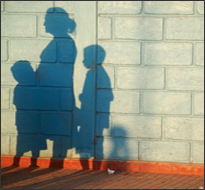
How the United States government measures levels of poverty has changed little since the bureaucracy began making official estimates in the 1960s. Many observers have noted that the official statistical model has not kept up with the times: for example, it does not take fully into account rising medical costs, and it uses a multiplier of food costs as an index by which to set the official poverty income line for households. (Food costs have shrunk historically as part of the family budget.)
A new model being employed by the government on a working basis, called the Supplemental Poverty Measure (SPM), incorporates a host of significant shifts in family income and expenses (including rising core expenses standards of living, and geographic variations in expenses not reflected in official poverty level calculations.) The U.S. Census Bureau issued official poverty figures in September 2011 employing the older model, which remains the standard by which eligibility for government programs will be determined. (See this article for further explanation.)
A November 2011 research brief by the U.S. Department of Commerce and the Census Bureau, “Research Supplemental Poverty Measure, 2010: Consumer Income,” uses the new statistical model to evaluate the prevalence of poverty both in the general population and in a range of demographic subgroups (age, race, location, household size). The report also examines the impact of several government programs on reducing poverty levels as determined by both the long-standing official method and the proposed SPM.
Key study findings include:
- Overall, this means 49 million Americans live in poverty, an increase from the figure of 46.2 million reflected in the earlier 2011 Census numbers (calculated according to the older official formula.) This new measure puts the percentage of those in poverty at 16%, as opposed to the official number of 15.1%. The SPM guidelines put the poverty level at $24,343 for a family of four, compared with $22,113 under the older model.
- Of all those in poverty, the numbers expanded for those of working age — those between the ages of 18 and 65 — made up 59.5% of people in poverty (in contrast to 56.3% under official measures). Moreover, the percentage of residents 65 and older in poverty also rose using this new method of calculation, from 7.6% to 12.7%.
- “For most groups, SPM rates are higher than official poverty rates. Comparing the SPM to the official measure shows lover poverty rates for … the poverty rates for children under 18, African-Americans, renters, those living outside major metropolitan areas, residents of the Midwest and South, and those covered by public health insurance.”
- Poverty levels increased for residents of the U.S. Northeast (+1%) and West (+4.6%), and declined for those in the South (-2.2%) and Midwest (-3.5%) when SPM rates were compared to the older official poverty rates.
- Under SPM, government household resources such as the Earned income Tax Credit and SNAP lifted nearly 2% of recipients out of poverty; programs such as the Medical Out of Pocket (MOOP) expenditures, however, resulted in a 3.3% increase in the poverty rate due to the inclusion of MOOP-related expenses.
The report concludes that this new model “illustrates differences between the official measure of poverty and a poverty measure that takes account of in-kind benefits received by families and non-discretionary expenses that they must pay.”
Tags: poverty, inequality, campaign issue
